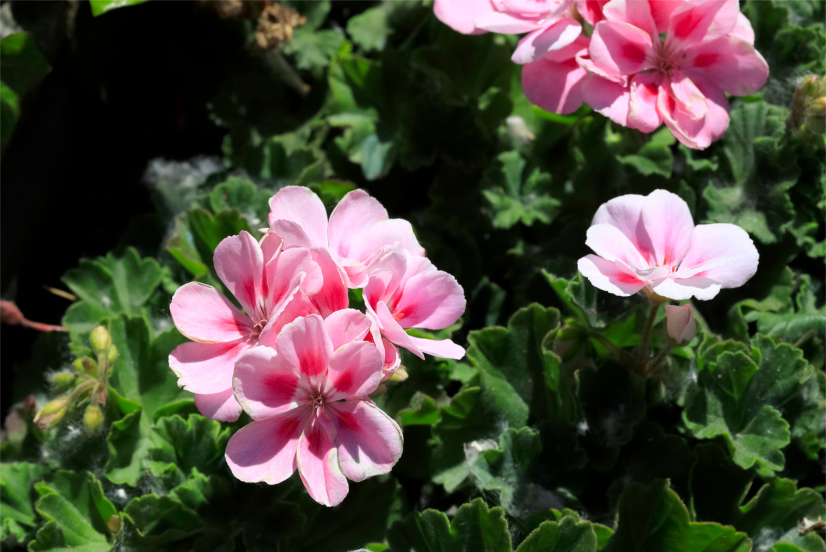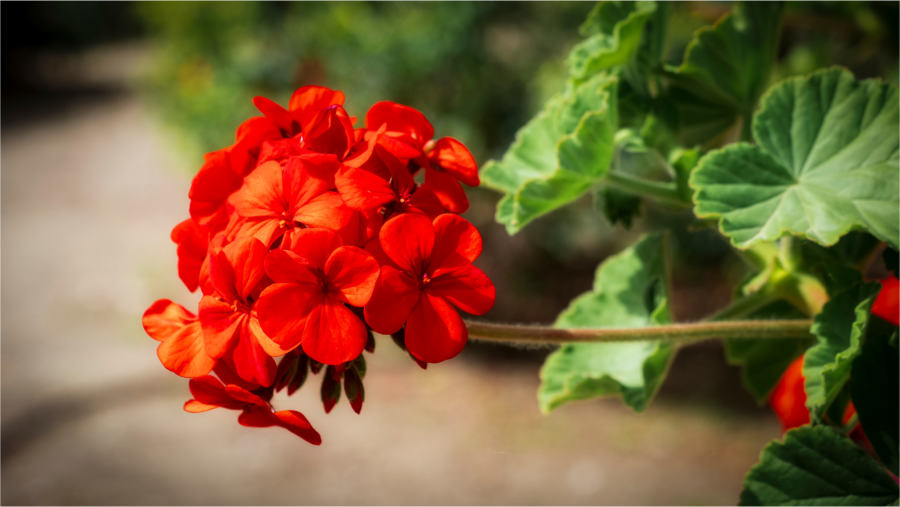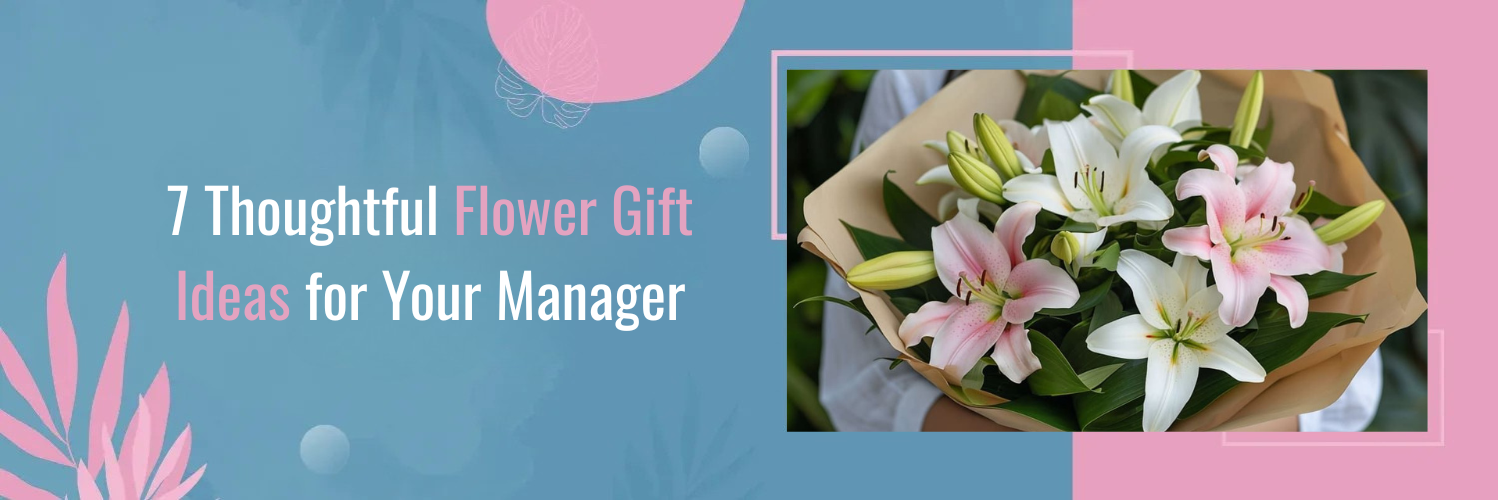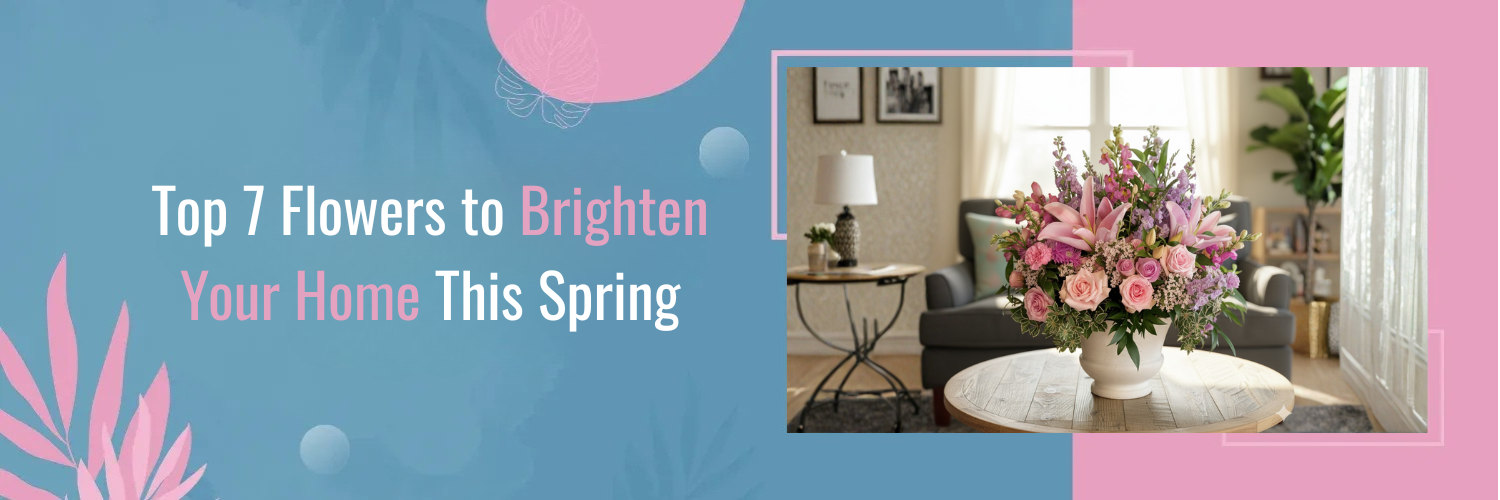What are Geraniums?
Geraniums, with their vibrant blooms and lush foliage, have secured a special place in the hearts of gardeners and flower enthusiasts around the world. These captivating flowering plants are renowned for their ability to add a burst of color and elegance to gardens, balconies, and indoor spaces alike. In this comprehensive guide, we’ll delve into the world of geraniums, unraveling their distinct characteristics and shedding light on the strategies to extend their flowering season.
Whether you’re a seasoned gardener or a budding plant lover, this exploration of geraniums will equip you with the knowledge and insights needed to nurture these botanical wonders and enjoy their blossoms for an extended period. Join us as we uncover the secrets behind these captivating plants and uncover the tips and techniques that will help you maximize their beauty and longevity.
Understanding Geraniums: A Guide to the Basics
Geraniums, beloved for their colorful blooms and versatility, are a popular choice among gardeners and plant enthusiasts. These flowering plants belong to the genus Geranium and are often confused with pelargoniums, which are commonly referred to as geraniums. It’s important to note that true geraniums are distinct from pelargoniums, which are often seen in gardens and on windowsills. Geraniums exhibit a wide range of varieties, each with its unique characteristics that contribute to their popularity.
The Blooming Beauty: Lifecycle and Flowering of Geraniums
Understanding the lifecycle of geraniums is crucial for ensuring their optimal growth and prolonged flowering. Geraniums go through typical stages including germination, growth, flowering, and dormancy. The factors influencing geranium flowering are multifaceted and encompass various environmental cues and plant physiology. The vibrant and eye-catching flowers of geraniums are the result of careful biological processes that involve petal development, pigmentation, and pollination mechanisms.
Environmental Factors and Their Impact on Geranium Flowering
Geraniums, as nature’s exquisite masterpieces, are intricately attuned to their surroundings, responding to a symphony of environmental cues that determine their flowering success. Understanding and managing these factors play a pivotal role in nurturing geraniums and ensuring their blooms dazzle for an extended period. Let’s explore the key environmental factors that influence geranium flowering and discover how to strike the perfect balance to create an optimal flowering environment.
- Sunlight requirements: Geraniums thrive in well-lit environments. Finding the ideal balance between direct sunlight and shade is key to their flowering success. Too much shade can result in sparse blooms, while excessive sunlight might cause stress to the plants.
- Temperature tolerance: Geraniums exhibit a remarkable ability to adapt to various temperature ranges. However, extreme cold or heat can hinder their flowering potential. Adequate protection during frost and shielding from scorching sun rays can make a significant difference.
- Soil quality and drainage: Providing the right foundation is essential. Well-draining soil with good aeration prevents waterlogging, which can lead to root rot and hinder nutrient absorption. A balanced soil pH also promotes healthy flowering.
- Watering techniques: Maintaining proper moisture levels is critical. Overwatering can suffocate the roots while underwatering can lead to stress-induced flower drop. Consistent watering with attention to the plant’s needs is vital for prolonged flowering.
Nutrient Management: Feeding for Flourishing Blooms
Behind every magnificent bloom of a geranium lies a carefully orchestrated dance of essential nutrients that fuel growth and flowering. To cultivate geraniums that exhibit a profusion of vibrant, long-lasting blossoms, understanding nutrient requirements and employing strategic feeding techniques is essential. Let’s delve into the world of nutrient management and explore the ways in which geraniums can be nourished for a display of flourishing blooms that truly steal the show.
Essential Nutrients for Geranium Growth and Flowering
Geraniums, like all plants, rely on a combination of essential macronutrients and micronutrients to thrive. Macronutrients, such as nitrogen (N), phosphorus (P), and potassium (K), play foundational roles in different aspects of plant development. Nitrogen supports lush foliage growth, phosphorus aids in flower formation and root development, and potassium contributes to overall plant health and disease resistance. In addition to these primary macronutrients, geraniums also benefit from a spectrum of micronutrients, including iron, magnesium, and calcium, which are vital for various biochemical processes within the plant.
Choosing the Right Fertilizers: N-P-K Ratios and Micronutrients
Selecting appropriate fertilizers with the right balance of nutrients is key to promoting healthy geranium growth and abundant flowering. Fertilizers are labeled with N-P-K ratios that indicate the relative proportions of nitrogen, phosphorus, and potassium. For geraniums, a balanced fertilizer with equal or slightly higher levels of phosphorus (the middle number in the N-P-K ratio) is preferred. Phosphorus aids in flower initiation and development, contributing to the show-stopping blooms geraniums are known for.
In addition to N-P-K ratios, micronutrients play a crucial role in geranium health. A comprehensive, well-rounded fertilizer that includes these micronutrients ensures that the plant’s needs are met across the board. Iron, for instance, prevents yellowing of leaves (chlorosis), while magnesium supports photosynthesis and chlorophyll production.
Frequency and Timing of Fertilization to Promote Extended Flowering
Fertilization schedules should be tailored to the plant’s growth cycles and flowering phases. Geraniums are most actively growing during their blooming season, typically from spring to late summer. Fertilize your geraniums at the beginning of the growing season with a balanced, slow-release fertilizer. This provides a steady supply of nutrients over time, reducing the risk of over-fertilization.
During peak flowering periods, consider supplementing with a phosphorus-rich fertilizer to boost flower production. However, avoid excessive fertilization, as it can lead to excessive foliage growth at the expense of blooms. As fall approaches and flowering starts to wane, reduce or cease fertilization to allow the plant to naturally transition into a rest phase.
In the intricate realm of geranium care, nutrient management emerges as a vital conductor in the orchestra of blooming beauty. By providing a well-balanced diet of macronutrients and micronutrients, and by adjusting fertilization timing to coincide with growth phases, you can ensure that your geraniums receive the sustenance they need to produce a breathtaking array of blooms. As we delve further into the art of extending geranium’s flowering season, we’ll uncover proven techniques that enable these plants to not only bloom but thrive with enduring grace.
Extending the Blossom: Proven Tips for Prolonging Geranium Flowering
As the curtain rises on the blooming season of geraniums, gardeners have the opportunity to choreograph a captivating spectacle that unfolds over an extended period. With a combination of mindful practices and expert techniques, it’s possible to coax geraniums into a symphony of blossoms that continues long after their initial flourish. Let’s delve into a repertoire of proven tips that will empower you to extend the flowering season of your geraniums and revel in their enduring beauty.
Pruning Practices: Removing Spent Blooms to Encourage New Growth
Pruning is an art that plays a significant role in the longevity of geranium flowering. Regularly removing spent blooms not only enhances the plant’s appearance but also signals to the plant that it should invest its energy in new growth and budding. As the petals of a flower fade, delicately trim the stem just above the first set of healthy leaves. This not only cleans up the plant’s appearance but also prevents energy wastage on seed production, allowing the plant to channel its resources toward producing new flower buds.
Deadheading Techniques: Stimulating Continuous Flower Production
Deadheading, the practice of removing faded or spent flowers, is a strategic move to keep your geraniums in a perpetual state of blooming. As flowers fade, they signal the plant to halt production, directing resources elsewhere. By removing these faded flowers promptly, you encourage the plant to continuously generate new buds and, subsequently, new blooms. This practice not only extends the flowering season but also maintains a lush and colorful display.
Pinching and Shaping: Enhancing Overall Plant Fullness and Flower Quantity
Pinching, an artful technique, involves gently removing the tips of growing stems. This encourages branching and creates a bushier, fuller plant. With more branches available for flower development, the overall floral display becomes denser and more magnificent. Additionally, pinching prevents the plant from becoming “leggy” or overly tall, distributing energy more evenly throughout the plant for a balanced and impressive show of blossoms.
In the intricate dance of geranium care, these practices weave together to create an enduring masterpiece of blossoms. By implementing pruning, deadheading, and pinching techniques, you’ll not only prolong the flowering season but also shape your geraniums into captivating works of horticultural art. As we journey deeper into the realm of geranium care, we’ll uncover the adjustments required across seasons to ensure that the show goes on, from spring’s initial notes to the grand finale of fall.
Seasonal Care Adjustments for Sustained Flowering
As the seasons change, geraniums adapt their rhythms, showcasing a mesmerizing transition from one act to the next. To ensure the continued symphony of blooms, gardeners must harmonize their care practices with the shifting seasons. By making thoughtful adjustments and providing tailored attention, you can orchestrate a seamless progression of vibrant blossoms that spans the calendar. Let’s explore the seasonal care adjustments that will enable you to nurture geraniums for sustained flowering excellence.
Preparing Geraniums for Spring: Transplanting and Rejuvenation
Spring signals the awakening of nature’s grand spectacle, and geraniums eagerly join the ensemble. To set the stage for a successful blooming season, consider transplanting geraniums into fresh soil during early spring. Gently prune back any leggy growth accumulated over the winter months to encourage new shoots and buds. This rejuvenation process invigorates the plants, preparing them for the forthcoming floral showcase.
Summer Care Strategies: Mitigating Heat Stress and Water Management
Summer’s spotlight can be harsh, and geraniums must be shielded from the intensity of the sun. Placing them in areas with filtered sunlight or providing light shade can prevent sunburn and excessive stress. As the temperature rises, maintaining adequate moisture levels becomes paramount. Regular and consistent watering, particularly during dry spells, prevents stress-induced wilting and ensures that the plants remain vibrant and hydrated.
Transitioning into Fall: Maximizing Blooms During Cooler Weather
As autumn’s crisp notes start to echo, geraniums can still steal the spotlight with proper care. Continue deadheading faded flowers to encourage the production of new buds. While geraniums are generally frost-tolerant, it’s advisable to take precautions during early frosts. Covering the plants with frost cloth or bringing potted geraniums indoors on chilly nights can safeguard the delicate blooms. The transition into fall marks a period of slower growth, but with careful attention, geraniums can still showcase their blossoms until the final curtain call.
As the seasons ebb and flow, geraniums respond to the changing cues of nature. Adapting your care regimen in tandem with these shifts ensures that geraniums remain at the center of the blooming stage throughout the year. By preparing for spring’s renewal, managing the heat of summer, and maximizing the fall’s opportunities, you can extend the flowering season and witness the continuous enchantment of geranium blossoms. As we approach the final act of this guide, we’ll explore the nuances of caring for geraniums in containers, where tailored attention brings forth breathtaking displays.
Container Geraniums: Tailored Care for Potted Plants
- Selecting appropriate containers and soil mixes: Choose containers with drainage holes to prevent waterlogging. Use a well-draining potting mix that retains moisture without becoming compacted.
- Container placement and sunlight considerations: Place containers in areas where they receive adequate sunlight, typically 6-8 hours per day. Rotate containers periodically to ensure uniform growth and flowering.
- Watering protocols for potted geraniums: Potted plants require more frequent watering than those in the ground. Monitor soil moisture levels and adjust watering frequency accordingly, ensuring the soil doesn’t become waterlogged.
Troubleshooting: Common Issues Affecting Geranium Flowering
Even the most meticulously cared-for geraniums may encounter a few hiccups along their blooming journey. As the custodian of these botanical treasures, it’s essential to be attuned to the signs and symptoms that signal underlying issues. By identifying and addressing common challenges promptly, you can ensure that your geraniums continue to flourish and dazzle with their vibrant blossoms. Let’s explore some troubleshooting strategies to navigate through common issues that might affect geranium flowering.
Identifying Signs of Pest Infestations and Diseases
Pests and diseases can stealthily infiltrate your garden, wreaking havoc on geraniums and dampening their blooming potential. Keep a watchful eye for telltale signs such as distorted leaves, discolored spots, sticky residue (a sign of aphids), or fine webbing (indicative of spider mites). Early detection is crucial. Use organic pest control methods or insecticidal soap to manage infestations. Regularly inspecting the undersides of leaves can help you catch problems before they escalate.
Nutrient Deficiencies and Their Impact on Blooms
Geraniums rely on a balanced diet of nutrients to produce their iconic blossoms. Nutrient deficiencies can manifest as pale or yellowing leaves, stunted growth, and poor flowering. Conduct a soil test to determine deficiencies, and then address them with appropriate fertilizers. For instance, yellowing leaves might indicate an iron deficiency, which can be rectified with iron-rich fertilizers or soil amendments.
Addressing Root Rot and Overwatering Problems
Overwatering can lead to a range of issues, including root rot, which can severely impact flowering. Symptoms include wilting despite moist soil, yellowing leaves, and a foul odor emanating from the soil. To prevent overwatering, ensure proper drainage by using well-draining soil and pots with drainage holes. Allow the soil to dry slightly between waterings. If root rot is suspected, trim affected roots and repot the plant in fresh, well-draining soil.
As a guardian of your geraniums, proactive monitoring and responsive action are your allies. Regularly inspecting your plants, identifying issues early, and addressing them with appropriate solutions will help maintain the health and vitality of your geraniums flowering season. By understanding and mitigating common challenges, you’re equipped to foster a thriving environment that showcases the full potential of your beloved geraniums. As we approach the final stages of this guide, let’s recap the key points and insights that will empower you to extend the flowering season of geraniums and create a masterpiece of natural beauty in your own space.
Conclusion
In the intricate tapestry of gardening, geraniums stand as a testament to the beauty that flourishes through nurturing care. As we conclude this journey through the art of extending geraniums’ flowering season, we’ve unveiled the secrets that enable these blossoms to bloom and flourish over time. From understanding the delicate dance of environmental factors to mastering techniques like deadheading, pruning, and strategic feeding, you’re now armed with the knowledge to orchestrate a symphony of geranium blooms that dazzle from season to season.
Whether you’re celebrating a special occasion or simply want to brighten someone’s day, let us handcraft and deliver a bouquet that conveys your sentiments perfectly. Visit our website and explore our stunning collection, or give us a call to bring the magic of flowers to your doorstep. Embrace the art of extending beauty—both in your garden and beyond—with Bourkes Florist .
FAQs
Q: Can I grow geraniums indoors?
While geraniums are commonly grown outdoors, they can thrive indoors with proper care. Choose a sunny location near a window and ensure adequate ventilation.
Q: Do geraniums come back every year?
Yes, many geranium species are perennials and can come back each year. Proper winter care, including trimming and protection from frost, is crucial for their survival.
Q: How often should I deadhead my geraniums?
Regular deadheading is recommended, ideally every 1-2 weeks during the growing season. This practice encourages continuous blooming.
Q: What are the signs of overwatering geraniums?
Signs include wilting, yellowing leaves, and soggy soil. Adjust your watering routine to prevent overwatering, allowing the soil to dry between waterings.
Q: Can I use regular garden soil for potted geraniums?
Garden soil is generally not suitable for potted plants due to poor drainage. Opt for a well-draining potting mix enriched with organic matter.
Q: Are geraniums prone to any specific pests?
Yes, geraniums can be affected by aphids, spider mites, and whiteflies. Regular inspection and early intervention are essential to prevent pest infestations.
Q: When is the best time to fertilize geraniums for extended flowering?
Fertilize geraniums during their active growth phases in spring and early summer. Avoid over-fertilization, as it can lead to imbalanced growth.



























